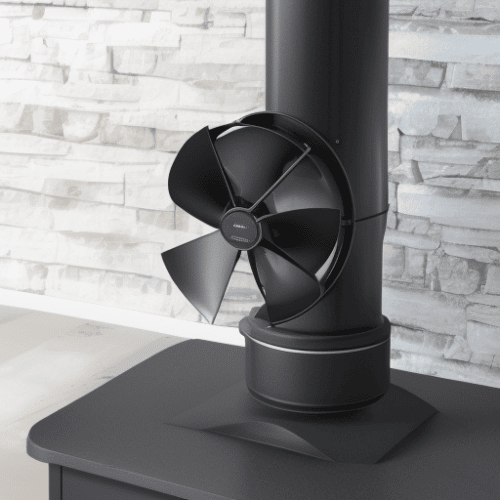Last Updated on
If you’re looking to upgrade your kitchen and make it more efficient, one of the best things you can do is install a stove fan. But where should you place it? That’s what we’ll be discussing in this blog post. We’ll cover the basics of where to place a stove fan, as well as tips for installing it correctly so that your cooking experience is top-notch. So if you want to get maximum efficiency from your new appliance, keep reading – we’ve got all the answers on where to place a stove fan.
Table of Contents:
Where to Place a Stove Fan: The Basics
A stove fan is an essential part of any kitchen. It helps to circulate air around the room, keeping it cool and comfortable while cooking. But where should you place your stove fan? The answer depends on a few factors, including the type of fan you have and the size of your kitchen.
The most important factor when deciding where to put a stove fan is the type of fan that you have. There are two main types: wall-mounted fans and ceiling-mounted fans. Wall-mounted fans are typically smaller than ceiling-mounted ones, so they can be placed closer to the stove for better circulation. Ceiling-mounted fans are usually larger and more powerful, but they require more space above them in order for them to work properly.
Another factor to consider when placing a stove fan is how large your kitchen is. If you have a small kitchen with limited counter space, then it’s best to opt for a wall-mounted model as this will take up less room overall. On the other hand, if you have plenty of counter space available then either option could work well depending on what kind of ventilation system you want in place in your home or apartment building’s walls/ceilings/floors etc
When installing either type of stove fan, it is important to ensure that there is sufficient clearance between it and any combustible materials such as curtains or furniture – at least 30cm (12 inches) should be left between these items and any heat source like stoves or fireplaces. This will help to avoid potential fire hazards due to overheating from too close a proximity. Furthermore, all wiring used with electric models must comply with local safety regulations before use; some areas may require additional insulation or grounding measures beyond those provided by manufacturers’ instructions alone.
Finally, remember that no matter which type of oven hood or ventilator system is installed, regular maintenance must still be performed according to the manufacturer’s recommendations. This includes cleaning filters regularly, checking ductwork connections, replacing worn parts and more in order to keep everything running smoothly over time. With proper care taken during installation and upkeep, your new appliance should provide years worth of enjoyment and comfort.
By understanding the basics of where to place a stove fan, you can ensure your home is well-ventilated and safe. Now let’s look at the best place for your stove fan to maximize its effectiveness.
The Best Place for Your Stove Fan

When it comes to installing a stove fan, the best place for it is above the stove. This ensures that the fan will be able to capture and circulate air more efficiently. It also helps keep your kitchen cooler by preventing heat from rising up and out of the cooking area. If you have limited space above your stove, then mounting a fan on the wall near your range is another option.
For optimal performance, make sure that there are no obstructions blocking airflow between the fan and your range hood or vent hood. Additionally, ensure that any cabinets or other items around your stove do not interfere with its operation either. A good rule of thumb is to leave at least 12 inches of clearance between any objects and your fan so that air can move freely without being blocked or hindered in any way.
When installing a stove fan on an exterior wall, make sure to use weatherproof screws as well as a sealant around all edges where moisture could enter into the unit’s motor housing or wiring system. Also consider using insulated ducting if you plan on running exhaust outside rather than recirculating inside; this will help prevent energy loss through conduction while also reducing noise levels within your home environment too.
Finally, when choosing a location for installation remember to take into account how much noise it may generate during operation – especially if you plan on placing it close to living areas such as bedrooms or family rooms. Some models can be quite loud when running at full speed, so this should be taken into consideration before making your final decision.
By considering the size and location of your stove, you can ensure that your fan is placed in the most effective spot to circulate air. Now, let’s look at how to install a stove fan for optimal performance.
Conclusion
When it comes to where to place a stove fan, the key is finding the right spot for maximum efficiency. Whether you’re looking for a simple installation or more complex setup, make sure you take into account all of the factors mentioned above. With proper placement and installation, your stove fan will help keep your kitchen cool and comfortable while cooking. So don’t forget: when it comes to positioning your stove fan – location is everything.
Paul is the type of person who never met a problem he couldn’t fix. He can always be found tinkering with something in his house, even if it isn’t broken! His tips and tricks are often shared on our site. He’s the one you call when something breaks because he has been known to improvise fixes for everything from leaky faucets to malfunctioning dryers.



